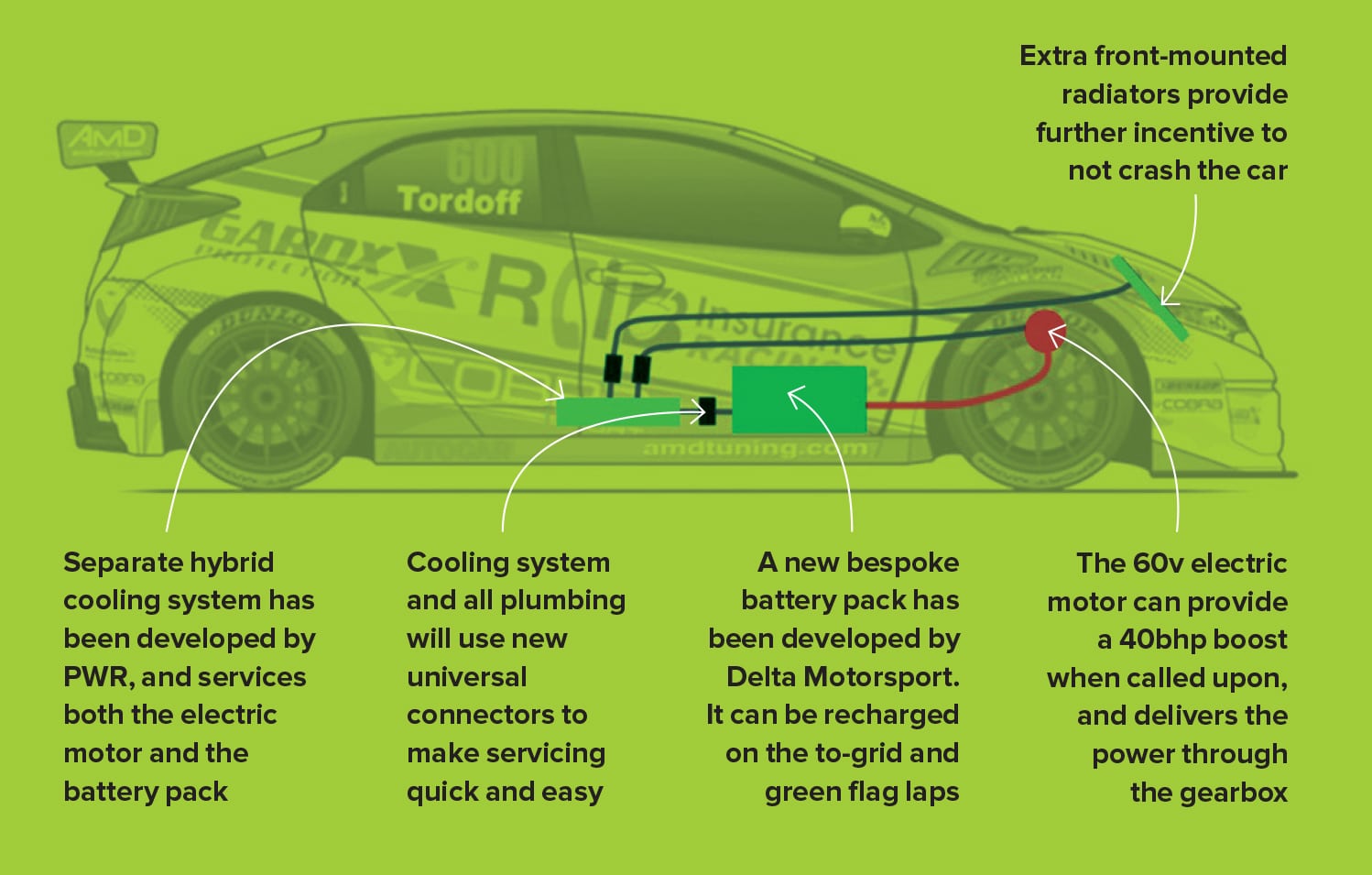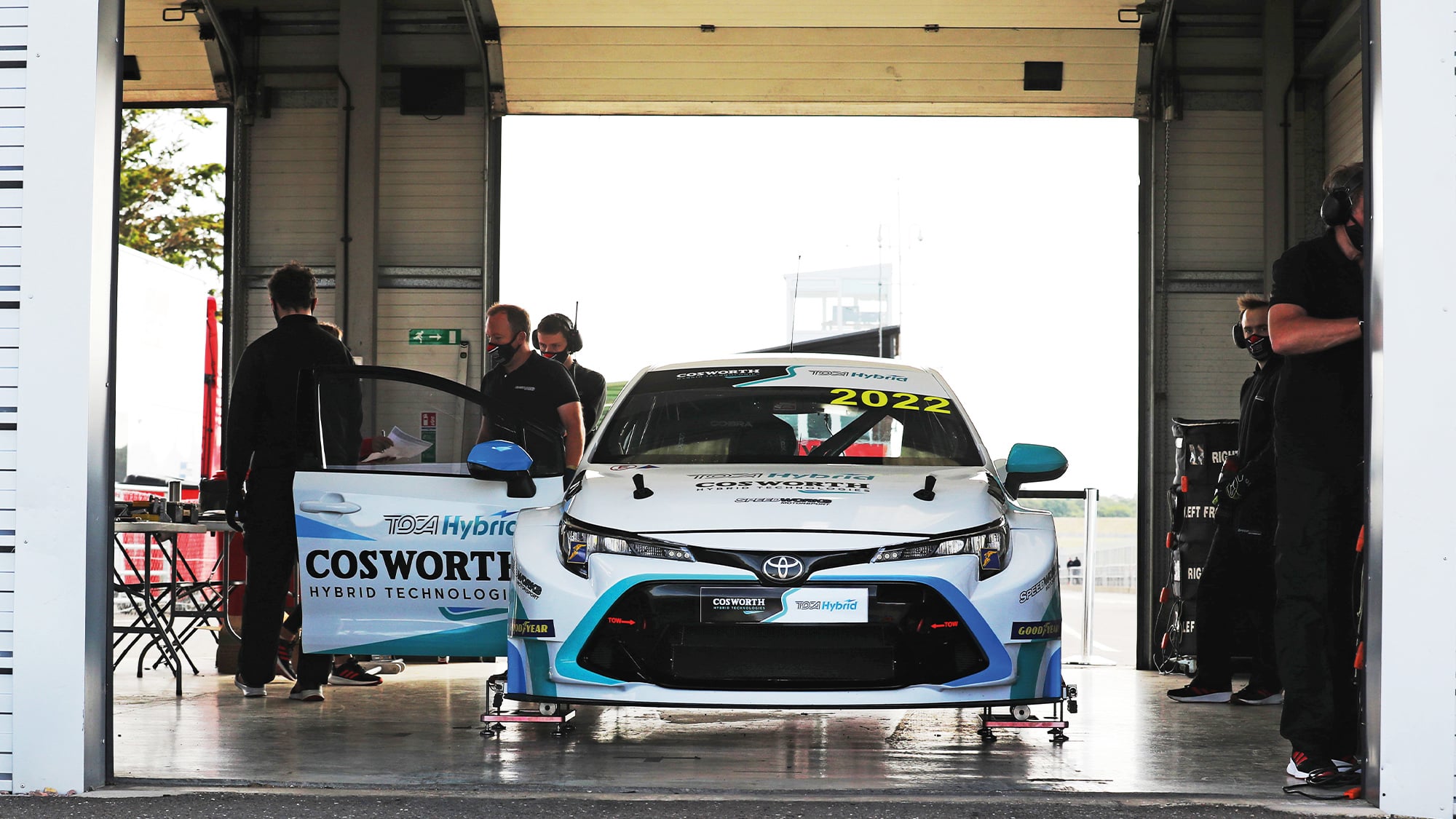The 2022 BTCC hybrid theory
Soon, the high-tech world of hybrid powertrains will be introduced into the British Touring Car Championship. But will it be a boost or a bust for what is already an ultra-competitive landscape? Robert Ladbrook spoke to the main players
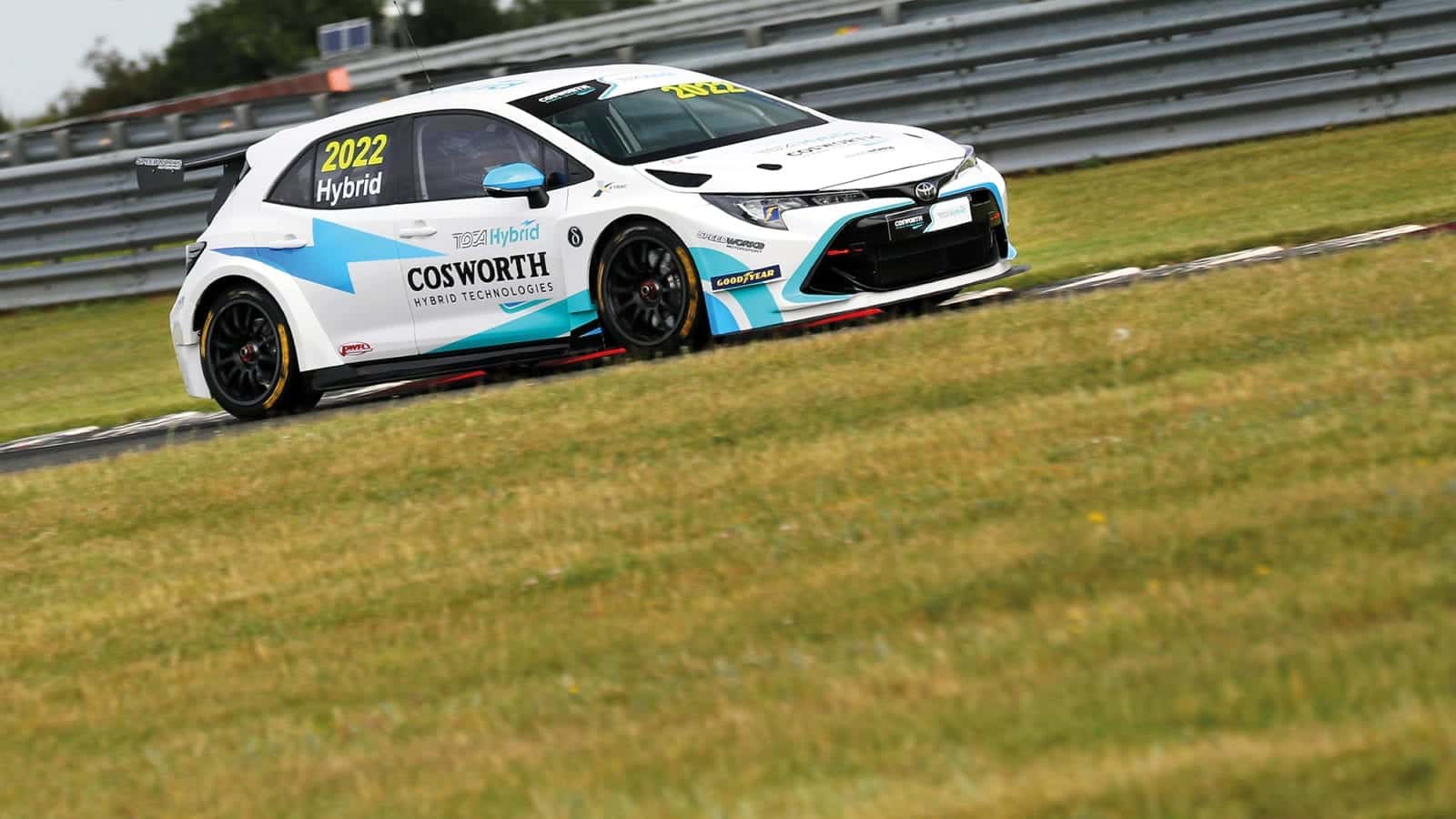
From 2022, all BTCC cars will be running a new, bespoke hybrid system. But could it hurt the racing?
It’ll be one of those eerie things. The sort where you know what’s happening, yet your brain struggles to compute familiar vision with alien sound. When the British Touring Car Championship combatants roll out of the pitlanes around the UK from 2022 they’ll look the same, but be very different. They’ll be silent, at least for a few moments. Then, once clear of the pit exit line, that usual rasping crackle of exhaust will return. Cue loud exhale. Normality resumes.
The BTCC’s decision to introduce hybrid technology into a series that has become so renowned for doing things the simple way has already caused a stir. How much will it change? Does it risk ruining the racing, stretching budgets and bringing on that most negative of reactions, people simply switching off?
The BTCC currently enjoys a lot of strengths. Huge grids, sensible budgets, superb marketing, stick-shift sequential gearboxes, drivers making the difference. So why the need for change?
Well, all that will remain, just with an added sprinkling of 21st century road relevance.
“You only have to look at the world around us – how many road cars and new buyers will stick with ‘traditional powertrains’ over the coming years?” BTCC supremo Alan Gow tells Motor Sport. “The BTCC has always aimed to be relevant to manufacturers, sponsors and our audience. Some element of electrification – whether hybrid or fully electric – is in our futures. To ignore the reality would be one of the most damaging things we could do.
“The BTCC is certainly not beholden to manufacturers, but we also want to be attractive to them. We can provide a high-profile and exciting way to promote hybrid power, which will tick a lot of boxes for them. I can’t think of a better, cost-effective way to instil emotion and passion into a person’s buying decision for their hybrid car than to see it race in the BTCC.”
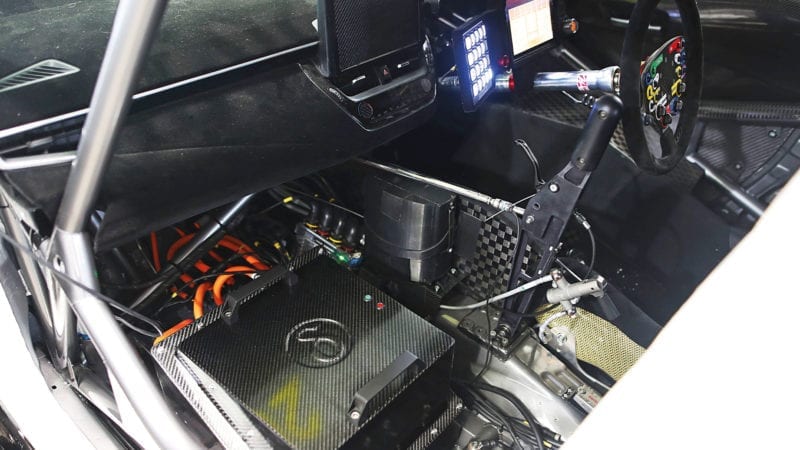
The battery pack is mounted in the passenger footwell, the same place success ballast is currently put
But there are risks to bringing in hybrid technology, with the added engineering input needed, extra data and difficulty of translating what’s going on with the cars to spectators. But, those at the heart of the project have no such concerns. While Formula 1 needs to rely on ultra-detailed graphics to get its hybrid messages across, the BTCC isn’t F1, and neither will it be running an F1-level hybrid.
“It will have a very positive impact on the racing,” Gow adds. “Our hybrid will primarily be a performance-enhancing addition to our cars and racing. It will bring increased overtaking and increased strategy.”
Whereas series like F1 focused on complex electrical systems aimed at energy recovery and the challenge of still creating 1000bhp-plus from 1.6 litres, and the World Endurance Championship’s prototypes chased efficiency by the bucket-load, the BTCC’s approach to hybridisation is different.
“This is a power system, not an energy or efficiency system,” says Clive Dopson, chair of TOCA’s engine technical review panel. “We worked with the teams and suppliers already in and around the BTCC to define what we needed from a hybrid. We wanted a push-to-pass and push-to-defend system, we wanted cars to be able to exit the pits under electrical power only, we wanted it to be good value, and we wanted it to fit around the current cars without changing too much technically. We also opted against any form of interaction between the brakes and the hybrid system, as we have a good mechanical braking system on the cars already and changing that would have been largely pointless and expensive. We’ve been working towards this since summer 2018.”
So, what is this system? Put simply, it’s perhaps the world’s most cost-effective motor-sport hybrid powertrain. A battery hybrid developed from a raft of readily available and proven parts, from proven suppliers, and designed to fit like a plug-and-play hybrid solution to the existing BTCC cars.
Teams will lease a full hybrid kit from TOCA each season, which consists of a gearbox-driven 60v electric motor, a battery system, plus all cooling, cabling and connectors to make it work alongside the 2-litre turbocharged engines.
When activated, drivers will get a 40bhp boost for up to 15 seconds per lap; each usage should gain a car with boost around 15 metres against one without. The system will then regenerate itself via the kinetic energy of the gearbox, and is capable of being fully charged within a single racing lap of most venues.
There is currently still some debate around how much boost the driver solely will be allowed to control from a button on the steering wheel, and how much can be pre-programmed to deploy automatically through the electronics. But, knowing the BTCC’s preference toward manual racing, expect the drivers to still be making the majority of the difference.
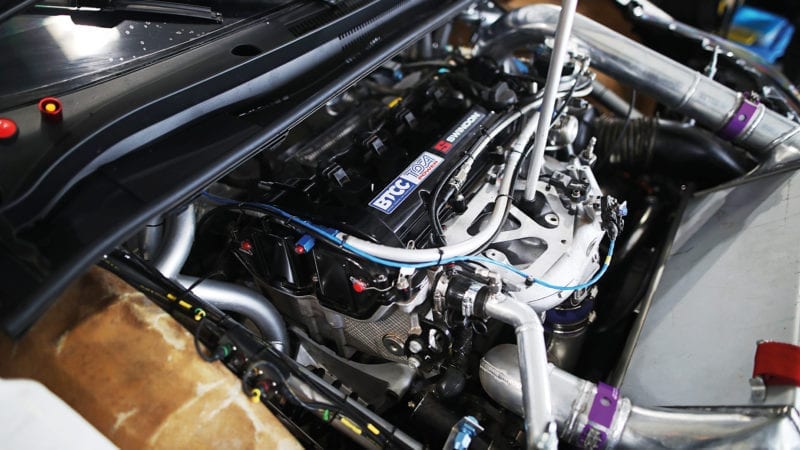
Creating a single system capable of working equally with different car and engine types has been a big challenge
TOCA technical director Peter Riches says: “The first challenge with these regs was not altering too much on the cars. It would have been far easier to start from a clean sheet of paper, but that would have brought a lot of additional cost, and that’s not the aim at all.
“The motors had to fit so the frames and suspension weren’t affected as NGTC [the current Next Generation Touring Car rules] doesn’t spend that sort of money. The challenge to the teams will be quite big, and whether the back of the grid can keep up with the front initially is debatable, but we can do all sorts of things such as limit the guys at the front to allow the rear to catch up again while everybody understands the new system. NGTC simplified things after we had years of over-innovation with rules like Super Touring, which was just engineering showboating.
“Effectively what we’ve done is give NGTC another five years of life with updates that move with the times. From start to finish NGTC will be a 16-year programme.”
“This is perhaps the best driving standards device we’ve created”
TOCA nominated existing electronics supplier Cosworth to manage the hybrid programme. Cosworth has in-turn partnered with PWR for the cooling and with gearbox supplier Xtrac, which has devised easy-fit modified gearbox casings to accommodate the electric motors. Battery supplier Delta Motorsport is the only new partner to the series.
One of the quirks of the BTCC is the range of engines and drive-types available to competitors. NGTC cars can be either front- or rear-wheel driven, and can use a number of different homologated engines, all of which already feature spec parts such as turbo, wastegate, intercoolers and ECU.
nd for those teams not working with a manufacturer to build their own homologated engine, TOCA offers an off-the-shelf option, which will be supplied by M-Sport from 2022 rather than Swindon as it is now. So there’s a range of different engines to cater for, too.
Creating a single system capable of benefiting all different types of cars equally was one of the largest challenges.
“There is a bit of an issue with the e-motor not being in the same position in FWD and RWD,” adds Dopson. “You could say it’s slightly more advantageous in RWD as it is mounted lower and further back in the car within the gearbox bellhousing, as opposed to being higher up at the front of a FWD car, but we plan to equalise that. Any advantage RWD would have with the e-motor we will take away by mounting the battery slightly further forward and higher in the cockpit to re-balance things. The hybrid will have no impact on the centre of gravity of the car. The system weighs 60kg, the same as the max success ballast we run at the moment, so there shouldn’t be any impact on tyres, brakes, driveshafts… anything.”
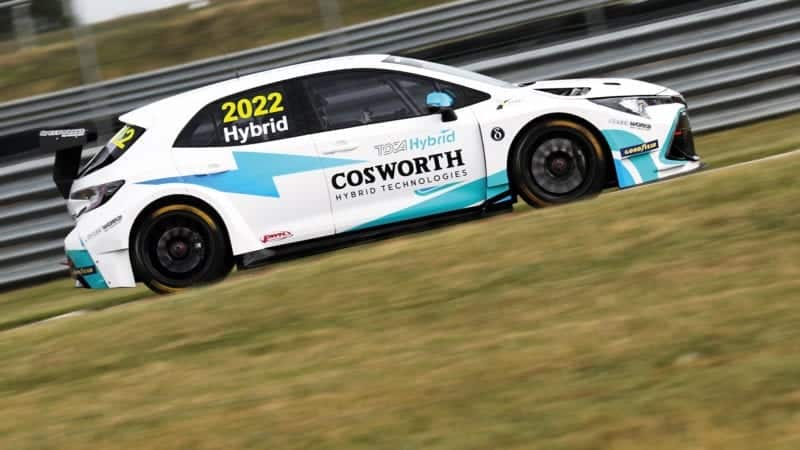
The BTCC Hybrid Toyota has already completed two full circuit tests, despite the strains of a virus-afflicted season. The system was initially due in 2021, but was sensibly pushed back to 2022
In terms of cost, TOCA and Cosworth have set the lease at £20,000 per car, per season. The deal has been restricted to a lease because parts can be swapped for free in the event of a technical failure, limiting the risk to budgets.
In order to keep costs down, Cosworth has come up with some novel solutions, as its head of electronics support Neal Bateman explains: “All of the parts are off-the-shelf products, all specially adapted for touring car usage. The e-motor is readily found in aviation, so we changed all of the connectors and ancillaries using our sporting knowledge to improve the serviceability and operation for the BTCC, so in essence it becomes a Cosworth product.
“The companies involved, such as Delta for the battery and Xtrac with the gearbox, have already used this technology and know it well. Having so many suppliers familiar with the BTCC means we know the difficulties of the teams and that makes the project that much easier. It’s a real collaborative effort.”
Perhaps the biggest change the hybrids will bring to the racing is that they will supersede the current success ballast system. Currently, if you win a BTCC race you can expect 60kg of lead to drop into your car for the next one. That will be a thing of the past for the new era, where the hybrid power will instead be adjusted to keep things tight on track.
The battery will be mounted in the passenger side, where the existing ballast box sits. After each race, Cosworth will fit a universal dongle to each car requiring success penalties, the coding on it limiting the hybrid boost available for the next race quickly and easily.
TOCA is still testing the restrictions to determine whether there will be a reduction in the outright 40bhp of extra power available, or a reduction of the energy of the system meaning successful cars could have the same 40bhp boost, but for less time over a lap.
So far, the BTCC hybrid has been fitted to a single car while it undergoes development – one of Speedworks’ new Toyota Corollas, which is already well into its testing programme.
Speedworks, which runs the Toyota Gazoo Racing UK squad in the BTCC, reported little issue with the installation of the first system.
Team boss Christian Dick says: “It should be a very neat and slick installation. We had a few hiccups with ours but it was the first one so it didn’t have the final universal connectors and things that will make it easier and faster for teams. I think it’s going to be cheaper and more simple to install than a lot think.”
Speedworks’ design and race engineer Spencer Aldridge adds: “The build time was very similar to our current race car, just a few hours more for the hybrid. We did have some issues packaging the cooling on the Corolla, purely because we have a very short front overhang, but that was the sole modification needed. Repair times also shouldn’t be bad. We can change the e-motor in about half-an-hour, and battery changes can be done in minutes. I’ve driven the Corolla with and without the hybrid, and it feels slow without when you go back to the current car.”
But, with all of this extra cooling at the front, does it risk changing some drivers’ bumper-bashing habits?
“We always say there should be some reward for not crashing your car, so this is perhaps the best driving standards device we’ve ever introduced,” laughs Riches. “We’ve engineered the system so that if you damage the hybrid radiators at the front and lose coolant, then you’ll just lose the hybrid system until it’s repaired. The engine will still run.”
There’s also the challenge of communicating the status of cars to fans. When stood on the banks, how do you know which cars are using the boost, and which have none left?
“The hybrids won’t externally change a car’s behaviour most of the time, they’ll still look and sound as they do,” says Gow. “The only time the audience will know they’re being used will be the immediate increase in performance, as well as some external LED lights that will signal when the hybrid is active. We’ll be communicating with our fanbase before 2022 in order to educate and inform them of the system and how it will be used.”
Lastly, in the modern world of other formulae looking to gimmicks such as drag-reduction systems, fragile tyres and intermittent bans of refuelling, the BTCC stands out as a championship not afraid to do what works.
Success ballast and reversed grids are both proven to improve the show of the BTCC, and rarely is either questioned by fans. But, could push-to-pass hybrids be a step too far?
Gow has the final word: “I take issue with them [reversed grids and success ballast] being called ‘gimmicks’ as they certainly are not. Horse racing has had success ballast in the form of weight handicapping since the 18th century. It’s a legitimate means of making the sporting spectacle and outcome less predictable.
“I think with the initial introduction of hybrids into F1, and the resulting decrease in engine note and the negative publicity it brought, understandably some people are nervous of hybrid and concerned it will have a similar negative effect for touring car racing. But that just won’t happen; our hybrid drives off the gearbox, so it will have zero effect on the engine noise. Hybrid will be a great fit for the BTCC and I don’t see any downsides.”
Back to the tin-top
Sports car ace Darren Turner on what it’s like tuning the BTCC hybrid
“I hadn’t driven a touring car since the SEAT Sport days in 2008, so being the hybrid development driver is a nice throwback to an exciting stage of my career. I kept in touch with Alan Gow and the TOCA team, and when they needed a driver with suitable development experience I was lucky enough to get the call.
“We did a few days on an airfield, just to ensure the system worked as intended, and then did our first circuit test at Snetterton in August. Before each run I’ll get a brief of what I’m expected to do, such as ‘deploy the system here for this long, and then try this here’ and the routine will change with every run. I did need a few laps without the hybrid engaged just to dial myself back into a touring car – get back into the habit of pulling a gear stick!
“At Donington Park we started to tune the performance. I’ve been deploying the boost manually via the steering wheel. Coming out of a corner like Coppice, I’m engaging it at the top end of third gear and by the end of the straight you can certainly see the difference in your speed and engine revs!
“I think it will be a positive thing for the racing. It won’t be like DRS, where we’ll see cars flying past each other effortlessly, but it will allow cars to get alongside each other more easily, but there will still be a lot of driver input to pull off the passes and to use it effectively for defensive driving, too.”
